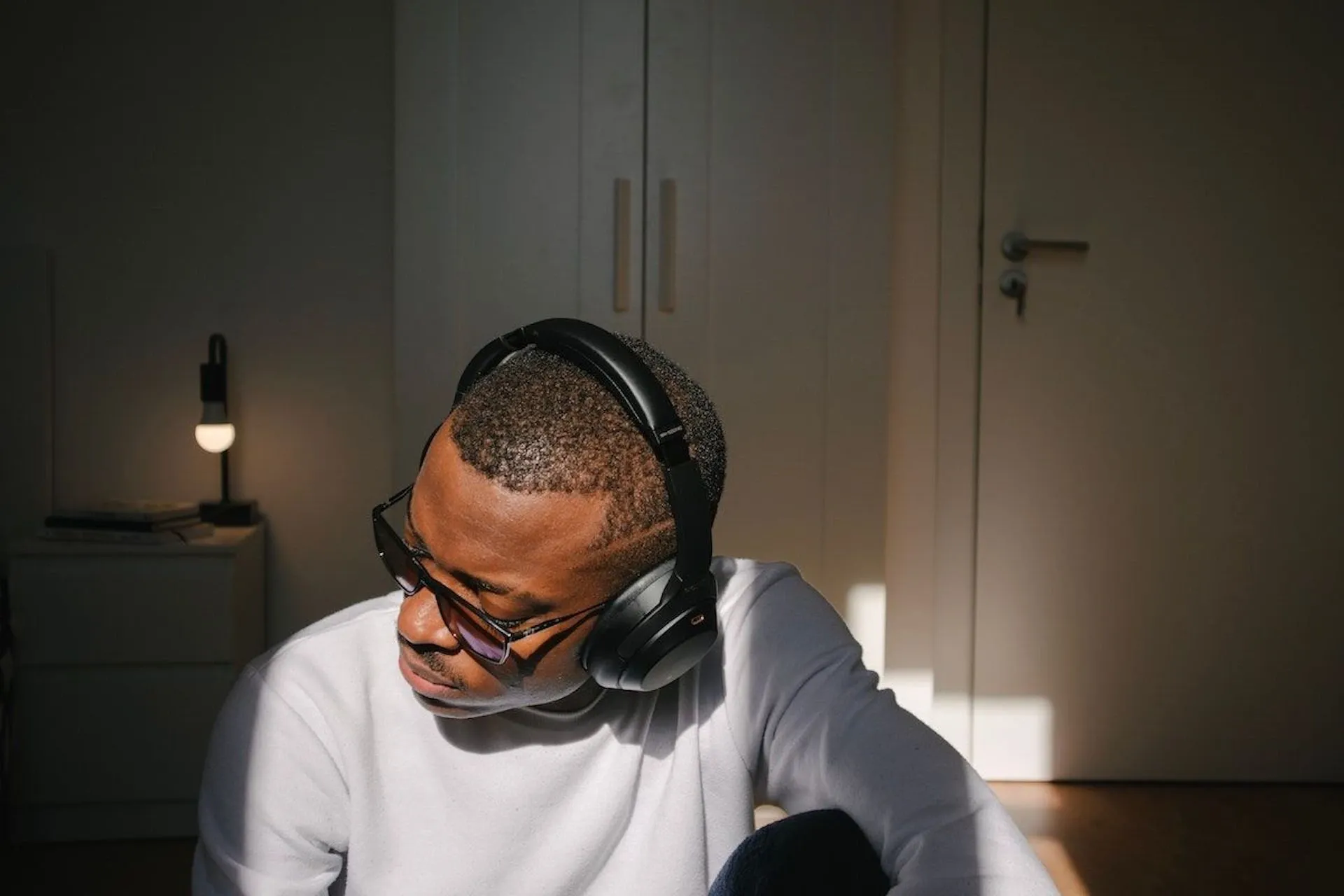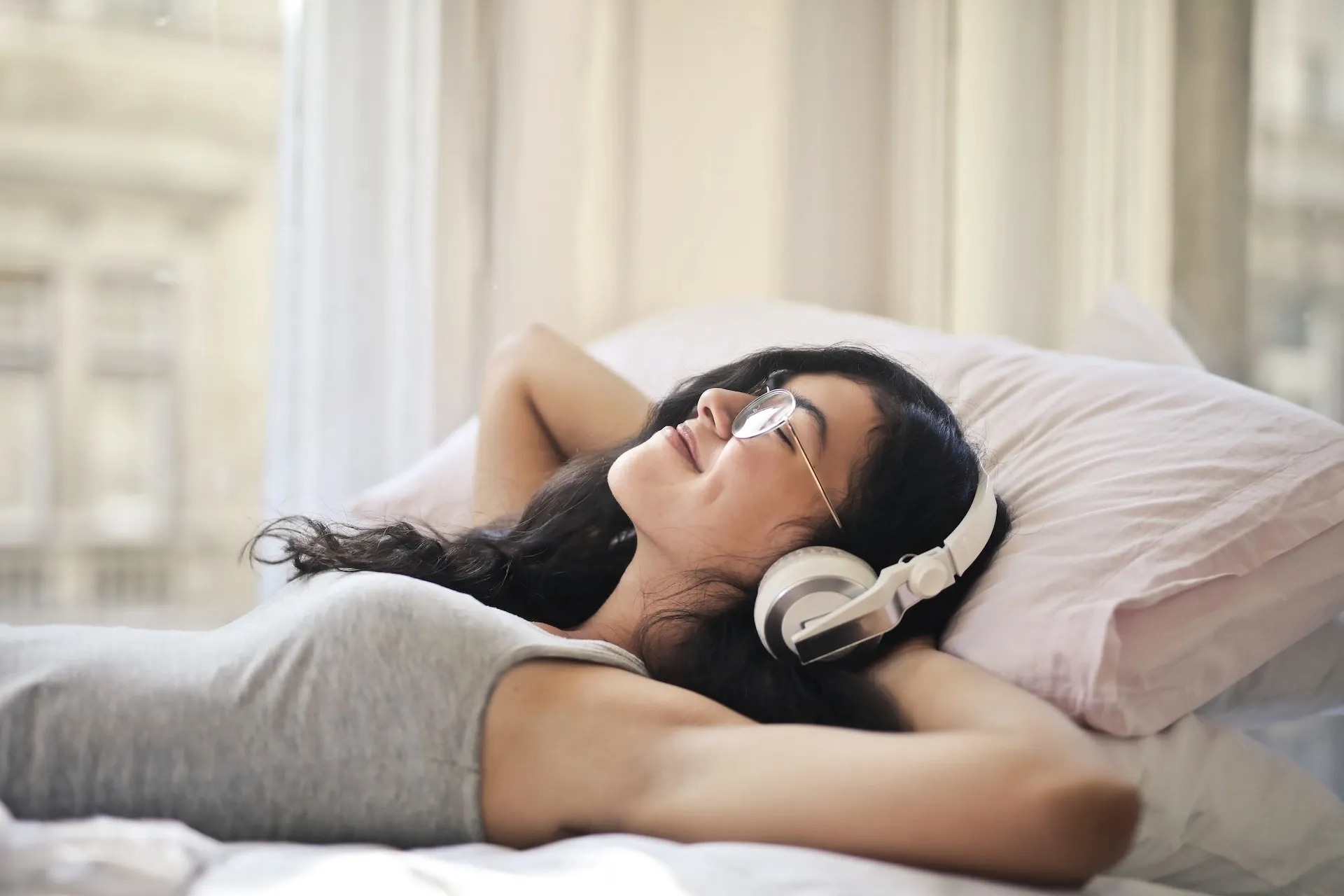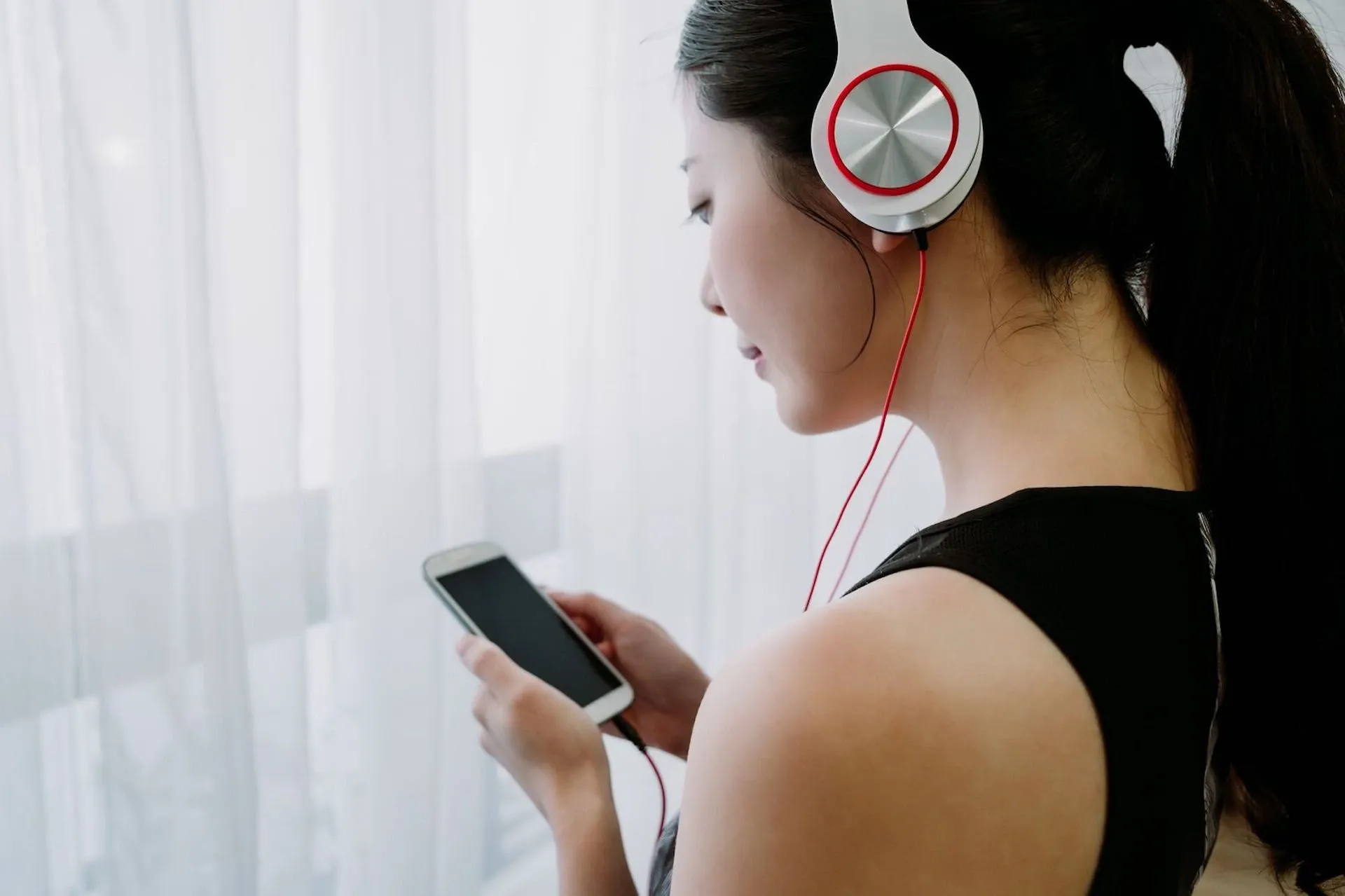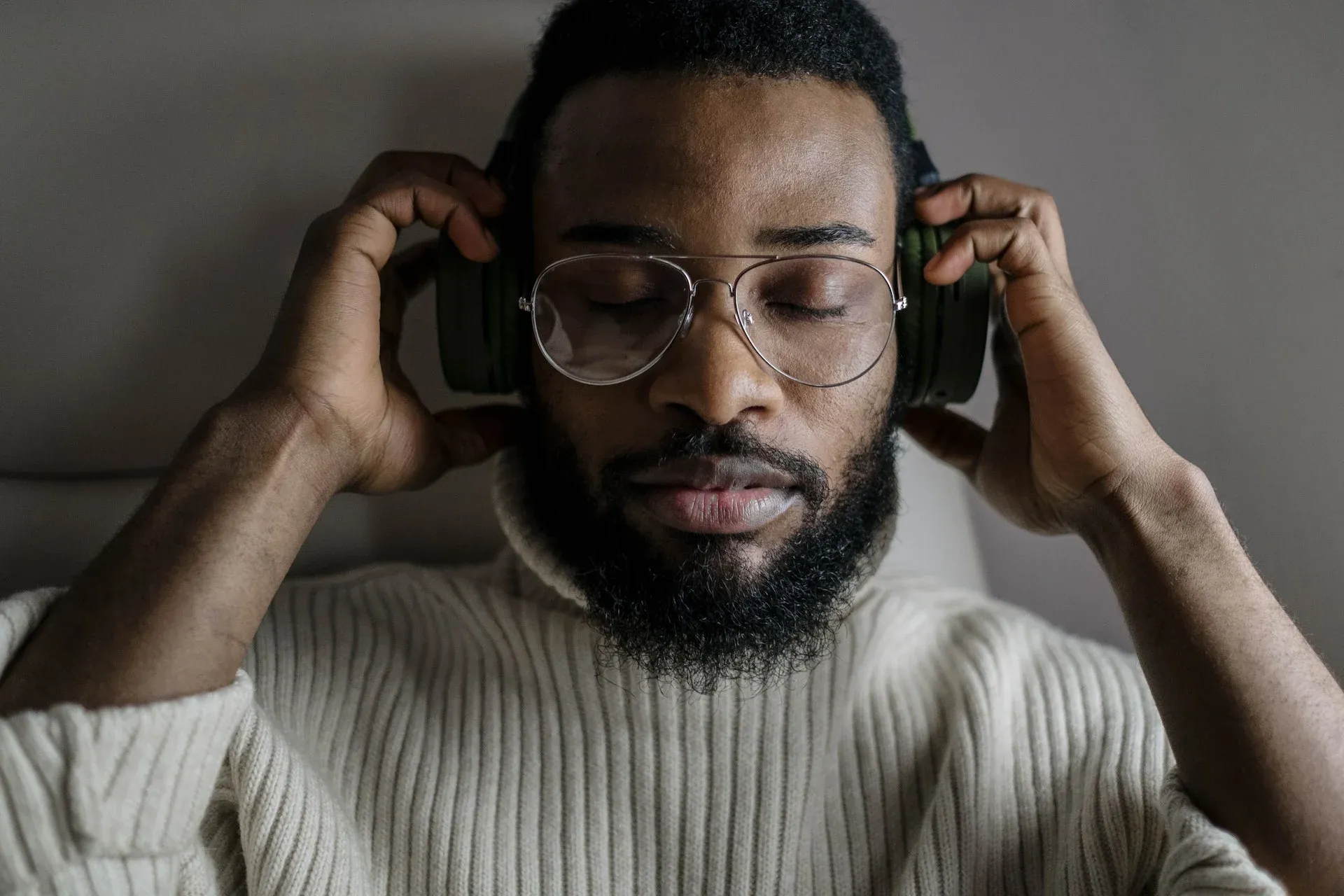8D audio: What is it and what’s the hype all about?
Ever heard a song that made you feel like you were in a different dimension? Today, we’re going to unravel what 8D audio is, how it works, and why it’s so damn cool. And finally, is 8D audio dangerous?

Have you ever heard a piece of music that made you feel like you were in a different dimension? Chances are it was an 8D audio song. Today, we’re going to unravel what 8D audio is, how it works, why it’s so darn cool, if it’s harmful, and where you can find 8D audio songs.
Check out our video with Epidemic Sound ambassador Bryan Francisco below, and keep reading for a full rundown.
We'll cover:
- What is 8D audio?
- How does 8D audio work?
- Do you need headphones to listen to 8D audio?
- Do you need special headphones for 8D audio?
- The health effects of binaural beats
- Is 8D audio good for neurodivergent people?
- What does 8D audio do for ADHD?
- Does 8D audio help with anxiety?
- Is 8D audio bad for you?
- How do you convert normal songs to 8D songs?
- How to make 8D audio
- Where can I find 8D audio songs?
What is 8D audio?
If you spend a lot of time on YouTube, you might have stumbled across videos with titles including ‘8D audio.’ It makes for a unique listening experience, and the next time you see those magic words, you might want to click.
You’ve probably heard of spatial audio, 3D audio – heck, even 4D. But 8D? What is 8D music? Is there actually such a thing as audio with eight dimensions?

No, there isn’t. Audio doesn’t really have dimensions at all. 8D music is essentially a subcategory of music that 'tricks' your brain into thinking you're in a bigger space. Artists and producers manipulate the stereo sections of a track, making you feel like the sounds are coming from different directions.
Some say it gives you the impression of listening to live music, while others suggest it makes you listen to music 'with your brain' instead of your ears. Pretty neat, if you ask us.
How does 8D audio work?
8D audio is created by combining equalization techniques, panning, and effects. Equalization is the process of changing the balance of different frequencies in audio. Panning, in short, is the technique of distributing sound on various audio channels. Combined, these components give the listener the sensation of having the music playing 'inside' their head.
Do you need headphones to listen to 8D audio?
Headphones are a must if you want to try out 8D audio – without them, you won’t get the 360 illusion.
If you listen to music through speakers, you’ll hear something called ‘crossover’ – the sound from one speaker bleeds into the other and is received by both ears at the same time. This means your brain can’t figure out exactly where each noise is coming from.

You could perhaps create an accurate 8D experience with speakers if you sat in a room with incredible acoustics, a 7.1 surround-sound speaker system, and too much time on your hands – you’d have to carefully mix and figure out which sounds come from each speaker, when and where. With headphones, the audio is controlled. It’s going directly into your ears and can’t be misinterpreted before it gets there.
Do you need special headphones for 8D audio?
You don’t need special headphones to listen to 8D music – even a pair of battered cans from the 1990s will work. Of course, certain headphones will perform to a higher standard. A robust, over-ear pair of noise-canceling headphones should do the trick. Here are a few options:
- Sony WH-1000XM series: The Sony WH-1000XM4 and 5 are often cited as customer favorites when it comes to 8D audio. They’re all fairly similar – the WH-1000XM5 naturally being an improvement on 2, 3 and 4 – and will cost you around 400 bucks.
- Bowers & Wilkins Px8: The Px8 is Bowers & Wilkins’ flagship wireless headphone. Its sophisticated ‘Carbon Cone’ technology provides accuracy when directing sound around your ears, but it isn’t cheap – these puppies retail for $699.
- Sennheiser HD 800 S: You want the best? Sennheiser’s got you covered. Sure, the HD 800 S headphones are more than most people’s monthly rent at $1,799.95, but they’re incredible. No compromise means no Bluetooth – this is a vibration-dampening, spatial audio experience that’s perfect for 8D music. It just might not be so good for your wallet.

The health effects of binaural beats
Binaural beats – meaning, when you hear tones in each ear with slightly different frequencies – are essentially the same thing as 8D audio. What’s interesting is that they're proven to have positive effects on your health – binaural beats are claimed to activate the same mental state associated with meditation, but much quicker.
For the brain to detect the binaural beat and react to it, the frequencies should be lower than 1,000 hertz. To work this out, you'd measure the difference in frequency between the waves entering the right and left ear.
For example, if the left ear registers a 200 hertz tone while the right ear registers one at 210 hertz, the binaural beat is the difference between 200 and 210. So, the binaural beat is 10 hertz.
Is 8D audio good for neurodivergent people?
Since 2020, 8D audio’s positive impact on neurodivergent people has become more recognized. This is thanks to several trending TikTok videos, which helped hammer the point home. Reported positive effects include:
- Relaxation
- De-stressing
- A more positive mood
- Full-body shivers – the good kind!

What does 8D audio do for ADHD?
Attention deficit hyperactivity disorder (ADHD) makes it difficult to concentrate. Why is 8D good for ADHD? Well, people with ADHD have said 8D audio helps them focus, especially if they’re working on tasks for a longer amount of time.
Does 8D audio help with anxiety?
Advocates of binaural therapy have said 8D audio's benefits can help reduce anxiety, stress, and other related disorders. Although some academic articles seem to confirm this hypothesis, the amount of research that actually supports it is still scarce. But if you’re feeling stressed, why not give it a go? In the meantime, check out our relaxing ASMR tracks, these 5.1 surround sound effects, and other high-quality tracks at Epidemic Sound for a similar effect.

Is 8D audio bad for you?
Let’s once and for all debunk the rumor suggesting that 8D audio might be harmful. Just like any sound, listening too loudly could cause damage, like tinnitus, in the long run. But as long as you keep it around 85 dB, you should be fine. In short, listening to 8D audio at a reasonable level is not dangerous.
However, while there are no serious, super-common negative effects associated with 8D audio, it’s not all roses. Some short-term effects people have cited include:
- Dizziness
- Nausea
- Sensory overload – this is more common for listeners with autism or Asperger’s syndrome
These symptoms are extremely rare, but that doesn’t mean they don’t exist. If you start to feel unwell while listening to 8D audio, take a break. The effects aren’t long-term and will vanish once you stop. If you come back to your 8D audio and still don’t feel great, you’ll know it wasn’t a one-off!
Is all of this really a new thing, though? The answer is no – this 8D effect has been around since the 1970s. But even though it’s not new, it’s still a cool experience. So if you haven’t already, check out the video below, where Epidemic Sound artist Ooyy’s song has been transformed into an 8D track.
How do you convert normal songs to 8D songs?
If you’re unsure of how to create the panning effects required for 8D audio, don’t worry. There are plenty of 8D audio converters out there that can help you out. 3D Music Player: 8D Audio is an app available for Android, while 8DMusic can be used for iOS. Both tools convert tracks from your library, in-app, and give them an 8D makeover.
How to make 8D audio
So, you know what 8D audio is, what it does, and how to convert normal songs to 8D. But how do you make your own pro-level 8D audio, where you control every element?
Well, there’s good news and bad news. The good news is that it can be done. The bad news is that you’ll probably have to hire someone to do it properly.
You’d start by producing your song as usual, in mono. You'd record separate tracks for each instrument, then a mixing engineer would mix the tracks, resulting in a balanced sound coming from the left and right.
Then, you’d ideally hire someone who specializes in mixing and mastering 8D audio. They’d take your regular track and position the different sounds on an audio map. Next, they’d merge these individual files to create a multi-dimensional, truly 8D song. If you sit in with them while they’re working or give them detailed instructions beforehand, you can guarantee the right elements pop just the way you want them to.

Where can I find 8D audio songs?
Some companies specialize in 8D audio, going above and beyond to transport listeners into a new place. Take Dolby Atmos, for example. It’s an audio format that produces sound based on your speaker set-up and where the noise comes from within the content, rather than ‘left/right speaker.’ It turns your room into a sound bubble, which is as futuristic as it sounds.
The catch is, Dolby Atmos requires compatible audio or video files, a Dolby Atmos-compatible player and…you guessed it, a Dolby Atmos-compatible soundbar or speaker system. It gets pricey.
YouTube is the go-to place for most free 8D audio songs currently on the market, with millions of matches.
However, it's unclear if all this music on YouTube is licensed and respects copyright law, given most of the 8D audio songs featured on the platform are renditions or remixes of famous tracks. Official 8D versions of original songs will only be made available on YouTube and streaming platforms if the rights-holders – usually the artist, songwriter, or record label – have authorized its creation.
If you look at this Epidemic Sound playlist, it uses the same techniques and production methods that characterize 8D audio. If you want to use these tracks for your project, why not use Epidemic Sound?
Our catalog is high-quality, affordable, and safe. An Epidemic Sound subscription goes beyond royalty-free music, removing the headache of licensing and freeing you up to do what you do best. You can enjoy the safety of our license hand-in-hand with our massive catalog of 50,000 tracks, covering just about every genre you can think of. You’ll also gain unlimited access to our advanced search functions — finding the right sound’s never been easier.
It’s better than royalty-free. It’s worry-free. Get started with Epidemic Sound below.

Related posts:

